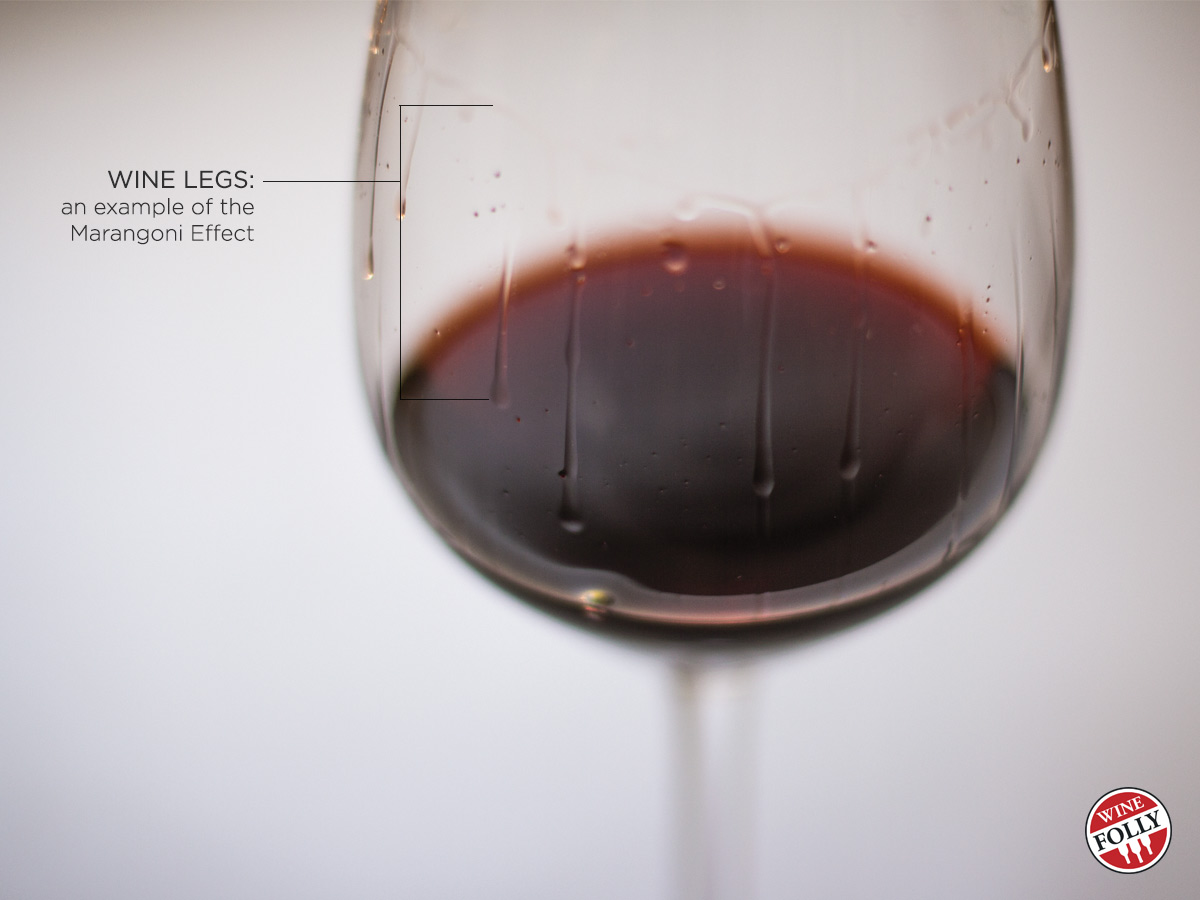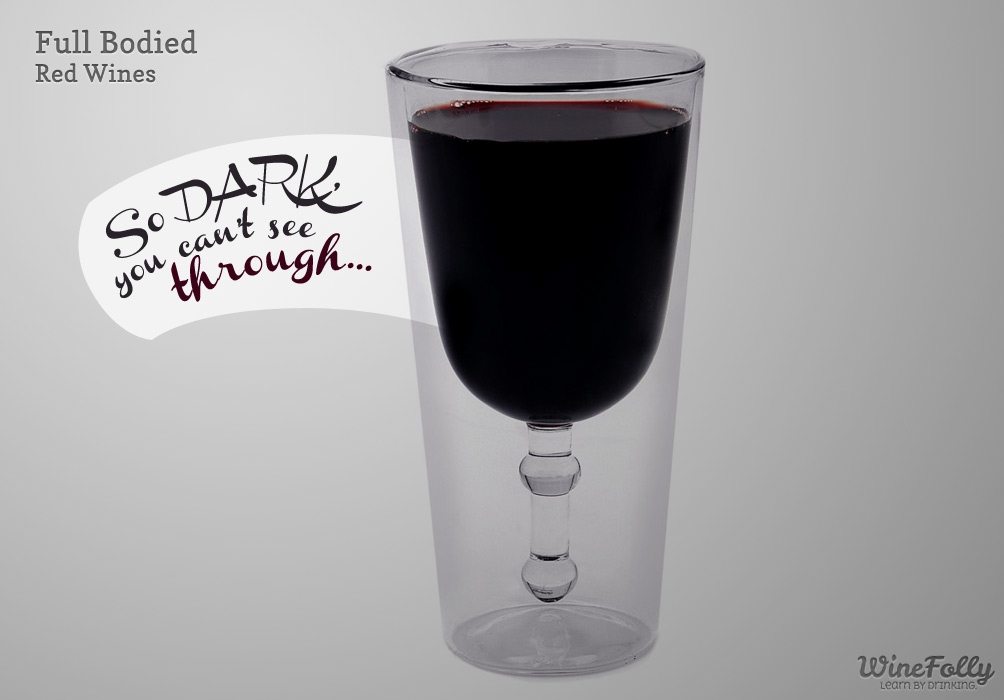Mouth-coating density characterizes full-bodied red wines.
So what are the biggest full-bodied red wines out there? Pay attention to a wine’s color, and you’ll notice darker wines tend to be bolder. This is because a large portion of the flavor comes from the skins of the grapes. As you may already know, some grapes have thicker skins than others.
Start by learning the 10 blackest grapes on the face of the planet. Then, understand techniques winemakers use to bring out the biggest, boldest flavors. AND FINALLY: You’ll know what to look for next time you’re searching for red wine.
Top 10 Darkest Full-Bodied Red Wines in the World
- Petite Sirah The natural cross of Syrah and esoteric French variety Peloursin has high tannin and blackberry flavors.
- Mourvedre Meaty flavors and black in color make this wine a popular selection to a small group of hardcore followers.
- Shiraz A marketing success for Australia in the late 1980s, it worked because of Shiraz’s sweet tobacco finish.
- Syrah Tasting of black olives to Red Velvet cake, Syrah hits your palate upfront and tapers off to the tingle of acidity.
- Douro Reds Indigenous grapes from the Douro including Touriga Franca and Touriga Nacional taste of fresh blueberries and violets.
- Nero D’Avola A value wine from Sicily tasting of licorice, black cherry and leather. Oak aging deepens and makes Nero D’Avola lush and opulent.
- Malbec Grown in high altitudes to increase acidity, this black-staining grape has blueberry and vanilla flavors when aged in oak.
- Tannat A grape from South-West France that’s starting to make a comeback.
- Cabernet Sauvignon* The classic full-bodied red wine from France that outputs pepper and cedar flavors along with loads of fruit.
- Merlot* When aged in American oak, merlot has higher tannin and savory tobacco flavors along with the classic taste of black cherry pie.
*Merlot and Cabernet Sauvignon are technically medium-colored wines because they are semi-transparent.
Other Factors That Make Full-Bodied Red Wines
You’re probably wondering why your favorite full-bodied Zinfandel wasn’t on the list above. And you’re right. There’s more to just thick skins that make full-bodied red wines. Mouthfeel, flavor, and structure are elements that go into making a full-bodied red wine. Some of these elements are physiological aspects of the grapes, and some of them are produced with winemaking techniques. Below are the main elements, besides the thickness of the skins, that go into a full-bodied red wine.
Winemakers are more like alchemists than ninjas.

Besides the skins and a high skin-to-berry ratio, there’s also pips. Wine grapes are seedy. Ever drink a bottle of Barolo and feel it dry out your mouth? The seeds (pips) are loaded with tannin, which is commonly referred to as structure. The pips in Nebbiolo grapes, which make Barolo, are very high in tannin. You can feel the tannin from pips towards the front of your mouth (whereas oak tannin is farther back on your palate).
What Winemakers Do To Make Full-Bodied Wines
Winemakers are more like alchemists than ninjas. They guide grapes into wine and only intervene when necessary. Still the winemaker’s choice of yeast will greatly affect the mouthfeel and taste of the resulting wine. Additionally, what they do after the wine is fermented also affects the flavor.
Malolactic Fermentation After the wine is fermented, an additional process called Malo-lactic fermentation (MLF) will increase the texture. MLF is when a special type of bacteria called oenococcus oeni eats one type of acid and poops out a different kind. Malic acid is the same acid that is in apples and this is what O. oeni eats. Lactic acid is smooth, like the creaminess of whole milk, and this is the byproduct. The result is a rounder, more creamy tasting wine.

Oak Aging Oak aging not only adds tannin but it adds aroma compounds to wine including vanillin. Oak esters and tannin add body, and help balance out the harshness of a wine. The newer the oak, the more it affects the wine. New oak barrels will often be ‘toasted’, which actually means torched with a fire. The torching caramelizes the oak and in some instances turns some of the oak to charcoal.
All of the chemical changes in toasted oak add different esters to a wine. How long the wine sits in oak also affects the resulting flavor and over a long time in oak wine will have a slightly increased alcohol level. If you like the bigger, bolder wines look for oak aging at 12+ months.

Higher Alcohol Feels “Richer”
Alcohol level adds to the viscosity of a wine. A wine higher in alcohol will feel weightier than wine with lower alcohol. You can physically see the impression of alcohol level as you swirl the wine in a glass. A wine with higher alcohol will have more viscous wine tears. Wines with 14%+ ABV feel richer.
A Spoonful of Sugar
Believe it or not, it is common to leave a hint of residual sugar (RS) in a full-bodied, dry red wine. Sugar, like alcohol, increases the viscosity of a wine. We’re not talking about a lot of sugar, only up to about 3-4 grams per liter. To leave sugar in a wine, the winemaker doesn’t add it. They stop the fermentation a little early by cooling down the yeasts and putting them to ‘sleep.’
Dark grapes lead to bold flavors – check out our video on Choosing Bold Red Wines Online and expand your cellar with a few big flavor bottles.


